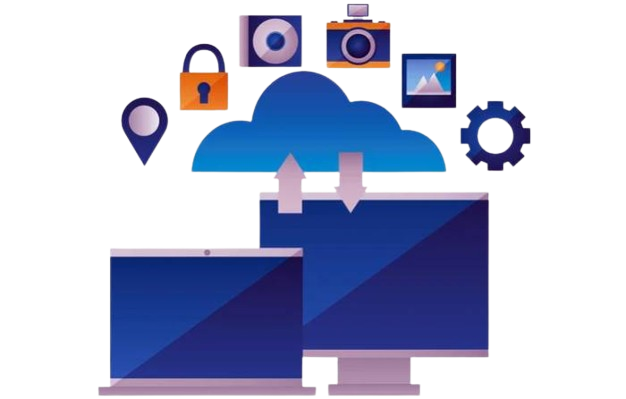- Conduct a comprehensive inventory of user information: Confirm that every piece of user data, such as email accounts, OneDrive documents, SharePoint content, and Teams settings, is completely recorded.
- Align user data with licensing: Verify that user accounts and their corresponding licenses are suitable for the configurations and licensing structures of the target tenant.
- Engage with stakeholders: Inform users about the impending modifications, preparing them for possible interruptions and keeping them updated on the schedule.
- Verify domain ownership: Confirm that the domain being migrated is authenticated on both the original and new tenants to prevent any potential issues.
- Prepare for DNS modifications: Strategically plan the DNS updates throughout the migration process to prevent problems with email delivery or service disruptions. Take into account the TTL (Time-to-Live) configurations of DNS records and adjust them accordingly to minimize propagation delays.
- Select appropriate migration tools: Utilize third-party applications or Microsoft’s built-in options such as the Office 365 Migration tool and Exchange Online migration capabilities to assist with data transfer.
- Verify data accuracy: Once users and mailboxes have been migrated, conduct tests to confirm that the integrity of the data is upheld, ensuring that emails, files, and configurations have been accurately transferred.
- Oversee email traffic: Track the MX records and the delivery of emails to guarantee a smooth and uninterrupted flow of communication.
- Verify user permissions: Make sure that users can access their mailboxes, documents, and other services in the new tenant without any problems.
- Review security protocols: Reassess security settings such as multi-factor authentication (MFA), data loss prevention (DLP), and compliance measures to confirm they are properly set up in the new tenant.
- Dismissing the domain from the previous tenant: Once you have confirmed that the domain is properly configured on the new tenant and the DNS updates have taken effect, proceed to eliminate the domain from the previous tenant.
- Terminate outdated accounts and licenses: Deactivate or delete any redundant accounts and licenses linked to the old tenant to prevent unwanted charges.
Efficient Office 365 Tenant-To-Tenant Migration
With Same Domain Solution
With Same Domain Solution
Transferring data between Office 365 tenants is a vital yet intricate endeavor for companies. Whether merging several tenants or restructuring your organization, executing a tenant-to-tenant migration smoothly is critical. A significant hurdle in this undertaking is keeping the domain intact, as many organizations prefer to use the same domain name post-migration.
This process, referred to as "same domain" migration, allows businesses to uphold uniform branding and communication across different platforms. This article delves into essential strategies, potential obstacles, and recommended practices for effectively managing an Office 365 tenant-to-tenant migration while maintaining the same domain. Visit www.duocircle.com for more details.
What is Office 365 Tenant-to-Tenant Migration?
Migrating from one Office 365 tenant to another means transferring data, user accounts, and configurations from one instance of Microsoft 365 services—such as Exchange, SharePoint, and OneDrive—to another. During this transition, it’s essential to shift emails, documents, and other critical information while ensuring experience of uninterrupted communication and functionality.
Nonetheless, when companies are required to transfer and retain their existing domain name, new challenges emerge. This includes maintaining the domain's activity and stability during the migration.

Why Is Same Domain Migration Challenging?
During a typical migration from one Office 365 tenant to another, the procedure generally entails moving users, mailboxes, and associated data to the new tenant. The domain may be configured in the new tenant with an updated set of DNS records, allowing the organization to maintain its ability to send and receive emails using its existing domain.
While conducting a "same domain" migration, the domain must be actively utilized in both the source and target tenants simultaneously. Microsoft’s recommendations emphasize the importance of meticulously managing DNS records, MX records, and domain settings to maintain uninterrupted mail flow and ensure that data migration proceeds smoothly, without disrupting communication or operational processes.
Best Practices for Efficient Same-Domain Migration
Pre-Migration Planning
It's important to evaluate both tenants for their compatibility, account setups, and the data currently in place. In this stage, organizations ought to:
Domain Preparation
Organizations must ensure that the DNS configurations are properly updated and verified in existing and new environments. Here are some important factors to consider:

Migrating Data and Users
After finishing the necessary preparations, you can start transferring users, mailboxes, and data. Here are some essential factors to keep in mind:
Post-Migration Monitoring and Validation
To guarantee the migration has been fully completed, the subsequent steps must be taken:
Decommissioning the Old Tenant
After finishing the migration and verifying that everything is functioning correctly, you can proceed to retire the old tenant. This procedure includes: